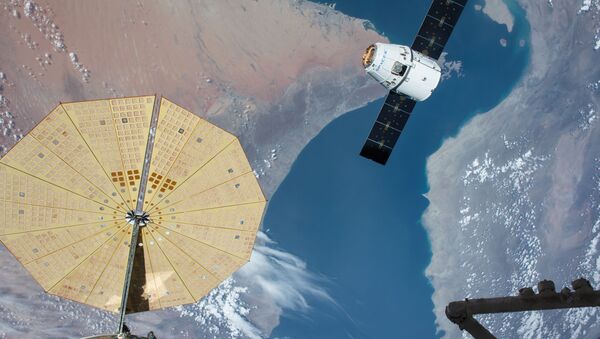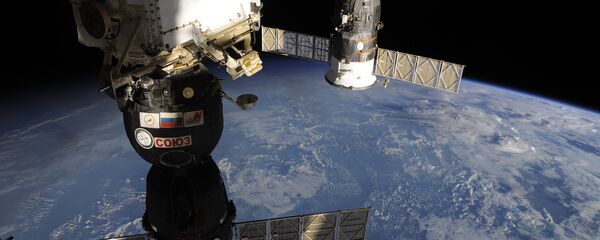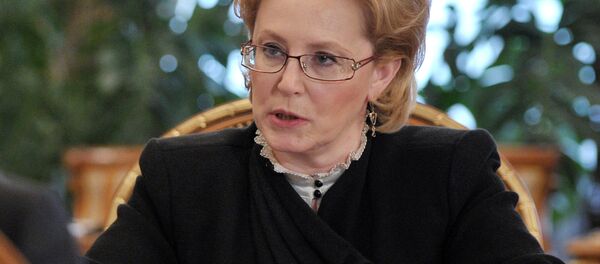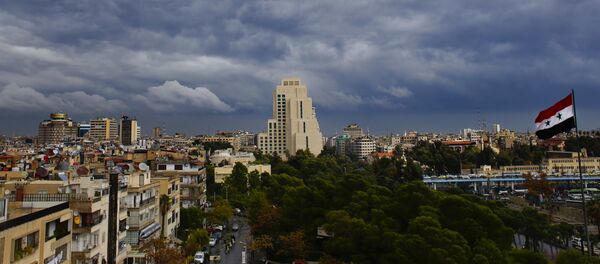"We are really excited about this next stage of The Space Suit Art Project. Unity will launch on the next SpaceX Dragon cargo spacecraft," Stott said. "Unity will be onboard the ISS for about 1 month and will return to Earth on the Dragon cargo vehicle."
Stott noted that once onboard the ISS, the space suit will be showcased as part of the crew during a video conference between the ISS and mission control in Houston currently planned for August 23.
"The video conference between the ISS and the ground will be coordinated through Mission Control in Houston, but will be streamed live to all participating control centers around the world. It will also be possible for the hospitals and anyone else to watch the event via the online NASA TV channel link," she explained. "Questions will be taken from children around the world who helped paint the artwork for the suit and the crew will answer the questions alongside UNITY floating with them in space."
The Unity suit has been created from the pieces crated by children battling cancer form around the world, including from Russia, the United States, Canada and Germany to represent cancer issues, spread awareness and give hope to cancer patients across the globe. The goal of the Unity suit project is to show that a victory over a severe illness as well as a space flight is a difficult physical and emotional test that can be accomplished only by working in a team.
The goal of the project is also raising the global awareness of the challenges of pediatric cancer, of the very positive affect of art and healing, Stott added.
"The launch of Unity to ISS is a milestone for each of the children who participated — it represents the realization of how their individual piece of art helped create a space suit that is actually flying in space," the astronaut said. "Once Unity is floating onboard the ISS it will provide a stunning and colorful presentation of their work to them and they will feel the connection, the unity, that comes from working together."
"They each will be able to literally look towards the stars and see a work of space art that they helped create by working together with other children from all over the world, and they will know that they have been a part of something very special — and our hope is that this will help them continue to dream and realize a wonderful future for themselves," she added.
Stott noted that the project has been supported by the ISS Program and all of the ISS partners, the space suit company ILC Dover, Space Center Houston as well as the Museum of Cosmonautics in Moscow.
"Along with the children, the global team for The Space Suit Art Project is made up of a group of artists, engineers, communication specialists, hospitals, passionate volunteers, and astronauts from all of the ISS partner countries around the world," she added.
"In addition, we will continue to use Space Center Houston as the home base for the suit and will likely also be continuing to display the suit at appropriate events in support of The Space Suit Art Project mission," she said.
"We are very thankful for the wonderful momentum and global inspiration that The Space Suit Art Project has had and provided so far," Stott said. "Our hope is that we can take advantage of this momentum and inspiration to continue to raise awareness of the challenges associated with pediatric cancer, to facilitate the spread of art and healing programs around the world, and to facilitate the implementation of pediatric cancer research onboard the ISS."
Stott said she has witnessed through the work of the program how human beings from all over the world can overcome incredible challenges and create amazing things when they work together.
"The Space Suit Art Project has taken this beautiful ISS example and further demonstrated how the inspiration of space and art can also help overcome incredible challenges, support healing, and create some pretty amazing things when we work together with hope for the future in mind," she said.
The Space Suit Art Project was launched by Stott and director of the Arts in Medicine Program at the University of Texas MD Anderson Cancer Center Ian Cion to demonstrate the benefits of arts and science to adults and children fighting cancer. The patients are tasked with hand-painting fabric patterns, which then get stitched together into wearable replica spacesuits at ILC Dover space suit manufacturer.
The first suit Hope made of more than 600 pieces hand-painted by the patients, their families, and the MD Anderson personnel symbolizes hope for recovery.
The suit Courage was made by MD Anderson patients most of whom were isolated from their families during the course of treatment. The suit symbolizes courage of the patients forced to stay away from the loved ones similar to when astronauts go to long space exploration missions.
A UK survey published in 2013 reported that 92 percent of adults with cancer who tried art therapy found it helpful.







